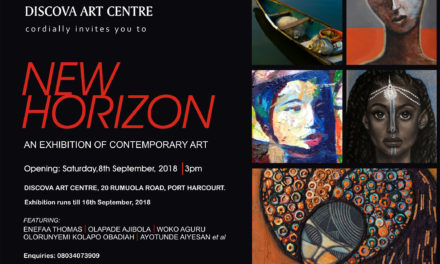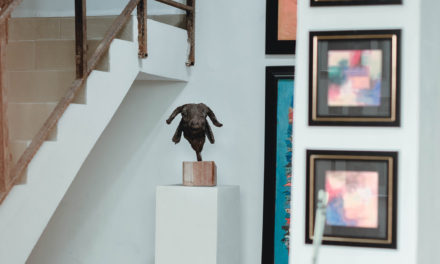When I heard about the solo exhibition of Ngozi-Omeje Ezema’s Boundless Vases, the first of a three-part Exhibition Series – The New Nsukka School, which re-examines the conceptual and aesthetic concerns of the Nsukka School (a term used to distinguish artists who have studied and taught at the Fine and Applied Arts Department at the University of Nigeria, Nsukka), I was largely ecstatic; not just because the Artist is one I admire greatly but also because her remarkable work is unlike anything I’ve ever seen before.
Ngozi-Omeje Ezema is one of the new age artists that references a stylistic patrimony whose formal and aesthetic codes draw from a creative ideology in creating modern and contemporary art forms through the exploration of ideas, materials and form sourced from the environment. Her work has consistently challenged conventional notions of ceramic art and traditional use of clay by infusing modern sensibilities into her creations.
In the Artist’s own words:
“My practice as a ceramist spans years spent evolving from the use of the Potter’s wheel to a production combining pinching, tying, hanging and wrapping as a technique of working this material, clay. This shift in practice and technique gave room for the experimental spirit in me to soar. Thus, being limited in describing my world in its societal evolution through utilitarian wares like cups, plates and vases, I tilted towards more open-ended and discursive means – Ceramic Installation. So, the tendency to explore is inherent in the art works produced…Using strings to produce my installations depicts this very life on a balance. Thereby, reassessing the frailty of life with the use of strings as a source of life to the suspended artworks”.
The Boundless Vases Exhibition held at Kó, (A Lagos, Nigeria based Art space that is dedicated to promoting modern and contemporary art) through January 28 to February 11, 2021 features hundreds of suspended terracotta leaves-construct of suspended vases which at the slightest disturbance can shift shape and is also capable of producing musical sounds as the terracotta leaf forms make contact with one another. According to the Artist:
“The leaf represents aspects of tenderness in women that is often taken for granted. The leaf is equally suggestive of the long suffering that women undergo in relationships. When you look at the colour of the leaves in my work, they give the impression that the leaves have dried yet still retain their beauty.”
Each piece is just as remarkable as the next, especially with the structure of smaller vases encased within the larger vases which is intended to capture Omeje’s visions of womanhood in relation to subjugation, oppression, togetherness and motherhood. They left me wondering how long it took to create each of them; the attention to detail, evident of an Artist dedicated to the craft.
Even though the exhibition has come to an end, it is available virtually at Kó here, along with the ongoing second chapter of The New Nsukka School three-part series exhibition by Eva Obodo running through February 25 to March 18, 2021; followed by the third solo exhibition by Ozioma Onuzulike from April 1 to April 22, 2021.

















This was such a good read. Well done, Chidalu.
Nice write up and lovely photos Chidalu.